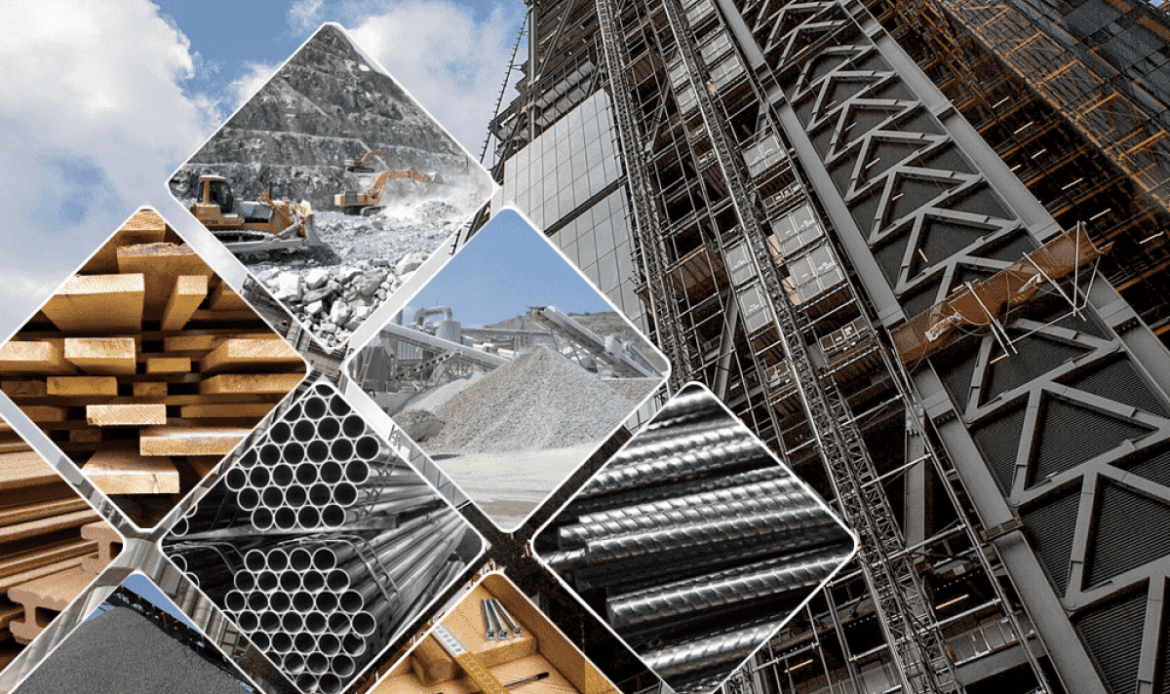
The Game-Changer or a Missed Opportunity? Exploring Revolutionary Materials and Cutting-Edge Techniques in Nigerian Construction
Introduction
Innovative Construction Techniques In Nigeria;
As Nigeria’s construction industry continues to evolve amidst rapid urbanization and infrastructural demands, the integration of innovative materials and techniques is becoming increasingly crucial. From enhancing sustainability to improving efficiency and reducing costs, modern advancements are transforming the landscape of construction in Nigeria. This article delves into cutting-edge materials and techniques that are reshaping the industry, offering a comprehensive look at their benefits and applications.
The construction sector is widely regarded as one of the primary drivers of national development, serving as a crucial indicator of economic performance. In Nigeria, where population growth and urbanization are expanding rapidly, the demand for infrastructure, housing, and commercial structures has never been greater. Yet, amid this soaring demand lies a persistent dilemma—how to build faster, smarter, more cost-effectively, and sustainably. This is where innovative materials and construction techniques become essential tools in addressing the challenges and inefficiencies plaguing the Nigerian construction landscape.
Over the past decade, the global construction industry has experienced a seismic shift—from reliance on traditional materials like concrete and steel to exploring advanced composites, 3D printing, self-healing concrete, recycled plastics, and modular technologies. These advancements are not just theoretical ideas confined to academic journals or international laboratories. They are practical, real-world innovations reshaping how buildings are conceived, designed, and delivered, even within developing nations like Nigeria.
The term “innovative construction materials and techniques” refers to the introduction and implementation of modern methods that either significantly improve existing construction processes or replace outdated materials with more sustainable, efficient, and cost-effective alternatives. In Nigeria’s context, this encompasses everything from the use of interlocking bricks and compressed earth blocks to solar-integrated roofing and prefab technologies. These innovations promise not just better buildings but also environmental benefits, economic efficiency, and social equity.
Yet, for every glowing headline about Nigeria’s adoption of green or smart buildings, there’s a sobering statistic about collapsed structures, project abandonment, and resource wastage. The Nigerian construction sector is paradoxical—it exists at the intersection of immense potential and chronic limitations. On one hand, there’s an increasing embrace of newer techniques and technologies. On the other, barriers such as poor policy frameworks, lack of skilled labor, substandard materials, and corruption continue to stifle innovation.
Why does this matter? Because innovation in construction isn’t just about sophistication—it’s about survival. With the United Nations projecting that Nigeria will become the third most populous country in the world by 2050, the pressure to provide adequate housing, resilient infrastructure, and sustainable urban developments will intensify. Innovative construction solutions offer a pathway toward meeting this demand efficiently without compromising quality or the environment.
Moreover, the global drive toward sustainability is influencing local markets. Construction companies, real estate developers, and architects are increasingly being challenged to align with climate-friendly practices. For Nigeria, which is already vulnerable to the effects of climate change, this alignment is not optional—it is imperative. The country must reimagine how its cities are built, how its rural communities are empowered, and how its built environment reflects both cultural authenticity and modern aspirations.
Fortunately, the narrative is not all grim. Several Nigerian firms and forward-thinking developers have begun to pivot towards modern practices. From eco-friendly estates in Lagos built using recycled containers, to the integration of solar tiles and rainwater harvesting systems in rural homes in Kaduna, real-world examples of innovation are surfacing. The rise of smart cities, although still in its infancy, signals an acknowledgment of the future—a future shaped by digital connectivity, sustainable materials, and modular design.
Educational institutions and research centers are also playing their part. Universities are collaborating with foreign experts to test alternative materials like bamboo composites and laterite mixes, while also championing training programs for future architects, engineers, and artisans. The role of startups and youth-led enterprises cannot be overstated either. They are spearheading low-cost, high-impact solutions such as 3D-printed housing prototypes and drone-assisted site surveys.
But it isn’t just about embracing change for the sake of modernity. It is about addressing Nigeria’s real, pressing construction-related challenges: housing deficits, poor road infrastructure, flooding, energy inefficiency, and unemployment. Innovative techniques can help reduce construction time by 50%, cut costs by up to 30%, and ensure better quality control across the board.
However, innovation must be inclusive. There’s a need to create policies that incentivize innovation while ensuring that such advancements are not limited to elite, urban developments. The village in Zamfara deserves as much attention as the suburb in Abuja. The small business owner in Ogun should have as much access to prefab technology as the multinational firm in Lekki. Only then can Nigeria truly harness the power of innovation in a way that promotes national growth and cohesion.
This article explores the innovative materials and construction techniques currently shaping Nigeria’s construction industry. It critically examines their benefits, the existing limitations to their adoption, and the opportunities they present for the future. By delving into real-life case studies, policy considerations, and global comparisons, this piece seeks to spark a deeper understanding of what it means to build smarter in Nigeria—and why doing so is no longer a luxury but a necessity.
The Evolution of Construction in Nigeria
Nigeria’s construction sector has historically relied on traditional methods and materials. However, the growing need for sustainable, cost-effective, and high-performance solutions is driving a shift towards innovative practices. This evolution is marked by a focus on:
- Sustainability: Reducing environmental impact through eco-friendly materials and energy-efficient techniques.
- Efficiency: Enhancing construction speed and reducing costs through advanced methodologies.
- Durability: Improving the longevity and performance of structures with new materials and technologies.
Innovative Materials in Nigerian Construction
1. Bamboo as a Sustainable Building Material: Bamboo is gaining recognition as a versatile and eco-friendly building material in Nigeria. Key benefits include:
- Rapid Growth: Bamboo grows quickly, making it a sustainable alternative to traditional timber.
- Strength and Flexibility: Despite its lightweight nature, bamboo offers impressive strength and flexibility, suitable for structural applications.
- Cost-Effectiveness: Bamboo is relatively inexpensive compared to conventional building materials, providing a cost-effective solution.
Applications of bamboo in Nigerian construction include residential housing, bridges, and temporary structures. Its use aligns with global trends towards sustainable and green building practices.
2. Concrete Technology Advances: Advancements in concrete technology are revolutionizing construction practices in Nigeria. Notable innovations include:
- Self-Healing Concrete: This technology incorporates bacteria or polymers that react with moisture to seal cracks autonomously. It enhances the durability and lifespan of structures, reducing maintenance costs.
- High-Performance Concrete: Formulated to withstand extreme weather conditions and heavy loads, high-performance concrete is ideal for infrastructure projects like bridges and highways.
- Lightweight Concrete: Utilizing lightweight aggregates, this type of concrete reduces the overall weight of structures, improving energy efficiency and reducing transportation costs.
These advancements in concrete technology contribute to the resilience and longevity of Nigerian construction projects, ensuring they can withstand diverse environmental conditions.
3. Recycled and Upcycled Materials: The use of recycled and upcycled materials is becoming increasingly popular in Nigeria’s construction industry. Key materials include:
- Recycled Aggregates: Derived from crushed concrete and masonry, recycled aggregates offer a sustainable alternative to natural aggregates, reducing the environmental impact of mining operations.
- Upcycled Industrial By-Products: Materials such as fly ash and slag from industrial processes are being used to enhance concrete and other construction materials, promoting waste reduction and resource efficiency.
Integrating recycled and upcycled materials into construction projects supports environmental sustainability and reduces reliance on virgin resources.
4. 3D Printing in Construction: 3D printing technology is revolutionizing construction practices by enabling the precise and efficient creation of building components. Applications include:
- Rapid Prototyping: 3D printing allows for the rapid production of architectural models and prototypes, facilitating design innovation and experimentation.
- On-Site Construction: Large-scale 3D printers can construct building components directly on-site, reducing material waste and construction time.
In Nigeria, 3D printing is emerging as a solution for creating affordable and customized housing solutions, particularly in remote or underserved areas.
Innovative Techniques in Nigerian Construction
1. Modular and Prefabricated Construction: Modular and prefabricated construction techniques are transforming the way buildings are designed and constructed. Key advantages include:
- Speed of Construction: Modular construction involves prefabricating building components off-site and assembling them on-site, significantly reducing construction time.
- Cost Efficiency: The controlled manufacturing environment of prefabrication reduces material waste and labor costs, leading to overall cost savings.
- Quality Control: Prefabricated components are produced in a controlled setting, ensuring consistent quality and precision.
Modular and prefabricated techniques are being increasingly adopted in Nigeria for residential, commercial, and industrial projects, addressing the need for rapid and efficient construction methods.
2. Green Building Technique: Green building techniques focus on reducing the environmental impact of construction through sustainable practices. Key techniques include:
- Passive Design: Incorporating design elements that optimize natural light, ventilation, and thermal performance to reduce reliance on artificial heating and cooling.
- Energy-Efficient Systems: Installing energy-efficient systems such as solar panels, rainwater harvesting systems, and high-efficiency HVAC systems to reduce energy consumption and environmental impact.
- Sustainable Landscaping: Utilizing drought-resistant plants and sustainable landscaping practices to minimize water usage and enhance the environmental performance of buildings.
These green building techniques are becoming integral to construction projects in Nigeria, reflecting a growing commitment to environmental sustainability.
3. Building Information Modeling (BIM): Building Information Modeling (BIM) is a digital technology that enhances the planning, design, and construction processes. Key benefits include:
- Improved Visualization: BIM provides detailed 3D models of buildings, allowing stakeholders to visualize and analyze design options before construction begins.
- Enhanced Collaboration: BIM facilitates collaboration among architects, engineers, and contractors by providing a shared platform for project information and updates.
- Cost and Time Savings: By identifying potential issues early in the design phase, BIM helps reduce costly changes and delays during construction.
In Nigeria, BIM is being increasingly adopted to improve project outcomes and streamline the construction process.
4. Smart Building Technologies: Smart building technologies integrate advanced systems and sensors to enhance the functionality and efficiency of buildings. Key technologies include:
- Automated Control Systems: Systems that control lighting, heating, ventilation, and air conditioning (HVAC) based on real-time data and occupancy patterns.
- Energy Management Systems: Technologies that monitor and optimize energy usage, reducing costs and environmental impact.
- Smart Security Systems: Advanced security features such as biometric access control, surveillance cameras, and alarm systems enhance building safety and security.
The adoption of smart building technologies in Nigeria is on the rise, driven by the need for efficient and technologically advanced solutions in urban and commercial settings.
Challenges and Opportunities
While the adoption of innovative materials and techniques presents numerous benefits, there are challenges to overcome:
- Cost and Accessibility: Some advanced materials and technologies may have higher initial costs or limited availability, posing barriers to widespread adoption.
- Regulatory and Standards Compliance: Ensuring that new materials and techniques meet local building codes and standards is essential for successful implementation.
- Skills and Training: The effective use of new technologies requires skilled professionals and adequate training, necessitating investment in education and workforce development.
Despite these challenges, the opportunities offered by innovative materials and techniques are substantial. By addressing these challenges and embracing technological advancements, Nigeria’s construction industry can enhance its sustainability, efficiency, and resilience.
Conclusion
Innovative materials and techniques are revolutionizing the construction industry in Nigeria, offering solutions that enhance sustainability, efficiency, and performance. From the use of bamboo and recycled materials to advancements in concrete technology and smart building systems, these innovations are reshaping the construction landscape. By overcoming challenges related to cost, compliance, and skills, Nigeria can leverage these advancements to achieve more sustainable and efficient construction practices. Embracing these innovations not only addresses current infrastructural needs but also positions Nigeria’s construction industry at the forefront of global trends and technological advancements.
As Nigeria stands on the cusp of massive urban and infrastructural transformation, the need for a forward-thinking approach to construction has never been more critical. The exploration of innovative materials and techniques is not just an academic exercise; it is a real-world imperative that can determine the nation’s ability to provide safe, affordable, and sustainable living spaces for its burgeoning population.
Innovative materials and modern construction techniques are the catalysts needed to drive this change. From the widespread use of interlocking bricks and modular units to the more advanced application of 3D printing and smart building technologies, the tools are available. The question now is not whether Nigeria can innovate, but whether it will innovate on a scale that matches the magnitude of its developmental challenges.
The promise of these innovations is immense. They offer cost reduction, time efficiency, structural durability, environmental sustainability, and aesthetic flexibility. These are not insignificant benefits in a country where construction costs are often prohibitive, project timelines unpredictable, and environmental degradation a pressing concern. When properly adopted and regulated, these techniques can also help reduce Nigeria’s carbon footprint and enhance resilience against climate-related disasters.
Nevertheless, the path to fully integrating these innovations is fraught with challenges. Issues such as lack of awareness, poor policy frameworks, substandard regulation, insufficient investment in research and development, and resistance from traditional stakeholders remain significant barriers. There is a pressing need for capacity building at all levels—from artisans and contractors to engineers and policymakers. The gap between innovative intent and practical implementation must be bridged through education, training, and public-private collaboration.
One cannot overemphasize the role of government in this transformation. Through updated building codes, financial incentives, and support for local manufacturing of alternative materials, the Nigerian government can create an enabling environment that encourages widespread adoption of these techniques. Public procurement policies should favor innovation-driven firms, and urban development plans should integrate sustainable practices as a standard rather than an afterthought.
Private sector involvement is equally essential. Real estate developers, construction firms, and financial institutions must begin to see innovation not just as a branding tool but as a business imperative. Firms that invest in new technologies today are likely to gain a competitive edge tomorrow—both in terms of profitability and social impact. Innovation is the future of real estate and construction, and those who delay adoption risk obsolescence in an increasingly tech-driven world.
Moreover, innovation should not be seen as exclusive to large urban centers. Rural areas, which are often left behind in infrastructural planning, must also benefit from modern construction practices. The decentralization of innovation—ensuring it is accessible to the grassroots—is the only way to achieve equitable development. Local governments and community leaders must be sensitized and empowered to lead the charge for localized innovation.
Education also plays a crucial role. Nigerian universities and technical institutions must revise their curricula to reflect contemporary construction trends. More partnerships with international institutions, research grants, and innovation hubs should be encouraged to spur original thinking and localized adaptation of global best practices.
Importantly, we must celebrate and scale the success stories already happening in Nigeria. The startups developing affordable prefab homes, the architects reimagining public spaces using recycled materials, and the communities constructing climate-resilient schools with local resources—these examples should be broadcast, funded, and replicated.
In the final analysis, innovation in construction is not just a tool—it is a transformative force. If embraced holistically, it has the potential to redefine the Nigerian landscape—physically, economically, and environmentally. It offers the country a rare opportunity to leapfrog past the inefficiencies of traditional construction and build a future that is smarter, safer, and more inclusive.
The road ahead is neither short nor easy, but it is necessary. By investing in innovative materials and techniques today, Nigeria secures a better tomorrow—one where infrastructure meets demand, development is inclusive, and the built environment reflects the resilience and creativity of its people.
Contact Us
For premier ways of Innovative Materials and Techniques in Nigerian Construction, contact Chaman Law Firm today. Our offices are conveniently located in Lagos, FCT Abuja, Ogun State, and the UK. We are readily available to assist you with your legal needs. Whether you require consultation, representation, or ongoing legal support, Chaman Law Firm is your trusted partner in Innovative Materials and Techniques in Nigerian Construction.
Call us at 08065553671 or email us at info@chamanlawfirm.com to schedule a consultation.
- Affordable Housing Solutions in Nigeria
- Lightweight Building Materials
- Bamboo Construction in Nigeria
- Self-Healing Concrete
- 3D Printing in Nigerian Construction
- Modular Construction Techniques
- Solar-Powered Building Solutions
- Low-Cost Building Materials
- Alternative Building Techniques
- Innovative Roofing Systems in Nigeria
Chaman Law Firm: Your Trusted Legal Partner in Innovative Materials and Techniques in Nigerian Construction
By choosing Chaman Law Firm, you are selecting a team of dedicated professionals committed to providing exceptional guideline tailored to your unique needs. Let us be your advocate and guide in the complex world of Innovative Materials and Techniques in Nigerian Construction, ensuring your interests are protected and your goals are achieved.


